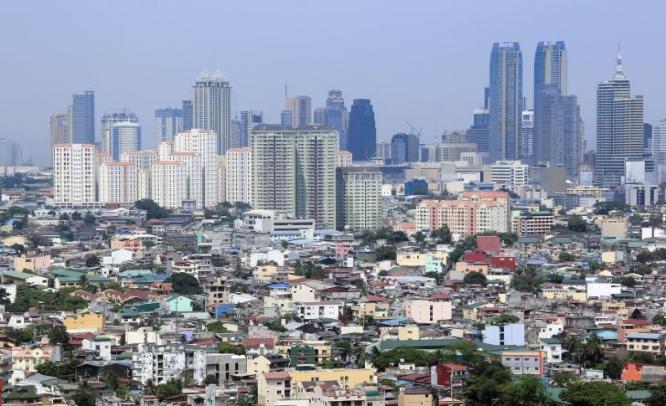The five cities considered most vulnerable to natural hazards are all in Asia: Dhaka Manila Bangkok Yangon and Jakarta, We must grow fast, but we also need to grow differently.
The economy of the Philippines stands out for its relatively robust 6.6-percent growth in 2012 amid lackluster economic growth in most places around the world. The crucial question, however, is how the country can sustain this performance to generate far more jobs and reverse the rise in poverty seen in the past decade.
Domestic reforms are paramount to the Philippines’ growth prospects, but cross-border factors matter, too, in our highly globalized world economy. Perhaps surprisingly for some, the danger of climate change arguably presents a greater threat than the current global economic malaise. If sustained growth is to take place, this challenge must be met. Specifically, we need to strengthen disaster resilience, care more for the urban environment, and confront climate change as part of the growth paradigm.
Climate-related disasters have crowded the headlines worldwide in recent years. East and Southeast Asia top the list of the regions affected. Floods and storms have cut significantly into annual growth rates in Australia, China, Indonesia, Korea, Thailand and Vietnam—a trend that is set to worsen. The Philippines, often the first major landfall for typhoons arising in the western Pacific, is among the most vulnerable.
Multiple factors, of course, explain these mounting disasters. First, many more people now live in harm’s way, particularly in low-lying megacities like Manila. Second, soil erosion, deforestation, and just plain overcrowding leave people more vulnerable to natural hazards. And third, the hazards are growing more menacing.
Scientists are nevertheless cautious in linking any particular disaster to climate change, whether it is Typhoon “Pablo” in Mindanao or Hurricane “Sandy” on the US East Coast. In the same way, economists are reluctant to pin higher inflation in any given month on rising money supply. But, as with inflation, the broader associations are unmistakable.
For some, the front-and-center needs of the Filipino poor will apparently heighten a dilemma balanced on growth versus the environment. But the dilemma presents a false choice. Relying on a longstanding growth pattern that fuels economic momentum with environmental destruction will only aggravate climate change. And it is the poor who stand to lose most from the ravages of global warming.
So, as Einstein is said to have observed, we can’t do the same things over and over again and expect different results. We must grow fast, but we also need to grow differently.
In essence, we need a new strategy that values all three forms of capital—physical, human and natural. Sound growth policies have long been understood as those that expand investments in physical and human capital. But unless we also invest in natural capital, all bets are off.
First, we should build disaster resilience into national growth strategies. Japan invests some 5 percent of GDP in this area: While paying a heavy price, it has avoided much worse economic damage and deaths from disaster because of this investment.
And high returns on such investment are evident even where the total spending is far less. In the Philippines, the effects of flooding in Manila after heavy monsoon rains in August 2012 contrasted strongly with the devastation in the city from Tropical Storm “Ondoy” in 2009.
The response to the most recent storm demonstrated the vast payoff from measures such as social media alerts, better relief operations, and early warning systems. It also highlighted the benefits of the hazard maps and upgraded rain and water-level monitoring systems promoted by Project NOAH (the Nationwide Operational Assessment of Hazards).
Second, planners need to raise the priority of urban management as a strategic thrust. The five cities considered most vulnerable to natural hazards are all in Asia: Dhaka, Manila, Bangkok, Yangon, and Jakarta. These urban centers are overcrowded and situated in ecologically fragile settings. The massive agglomeration notwithstanding, fewer than 50 percent of Asians live in cities, compared to 80 percent in Latin America. Further urbanization would seem inevitable. It is hard to overstate the high priority for careful physical planning, environmental care and judicious urban management.
Third, climate action needs to be part of the national plan. Economic growth will not be automatic if climate change is not dealt with. Adapting to the changing climate through better management of location decisions of people and businesses and protecting the natural environment assume urgency. But realistically, adaptation measures will not come nearly soon enough, so it is essential to mitigate climate change as well. No single country can make a difference in this respect. However, Asia, which is the most at risk, must be a powerful voice by switching to a low-carbon path and calling on others to do the same.
At the end of the day, we need to change our mindset on how growth is generated. Old-style growth at the expense of the environment will be self-defeating—a realization driven home by the stark reality of climate change.
Source:This article was first published by the Asian Development Bank (www.adb.org).


